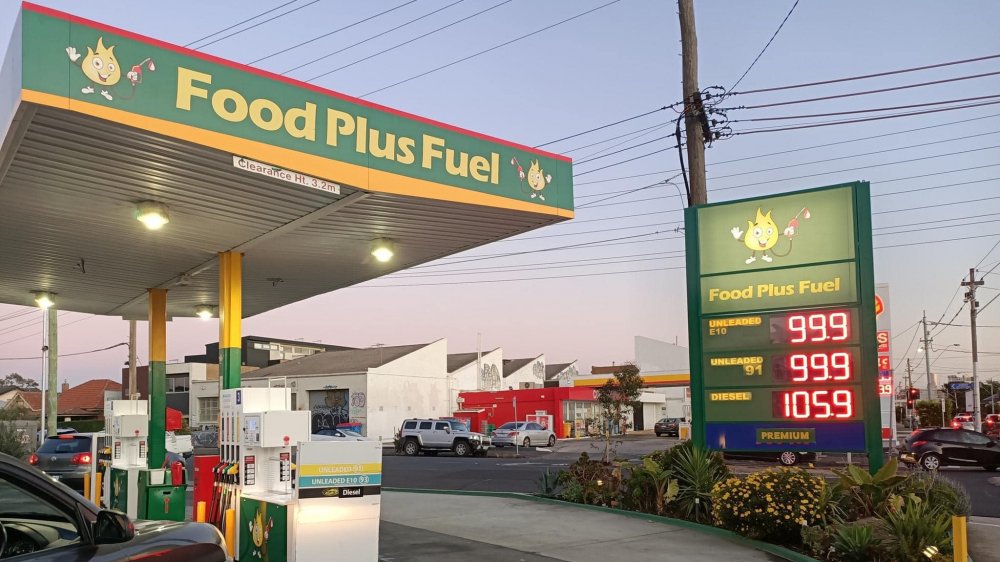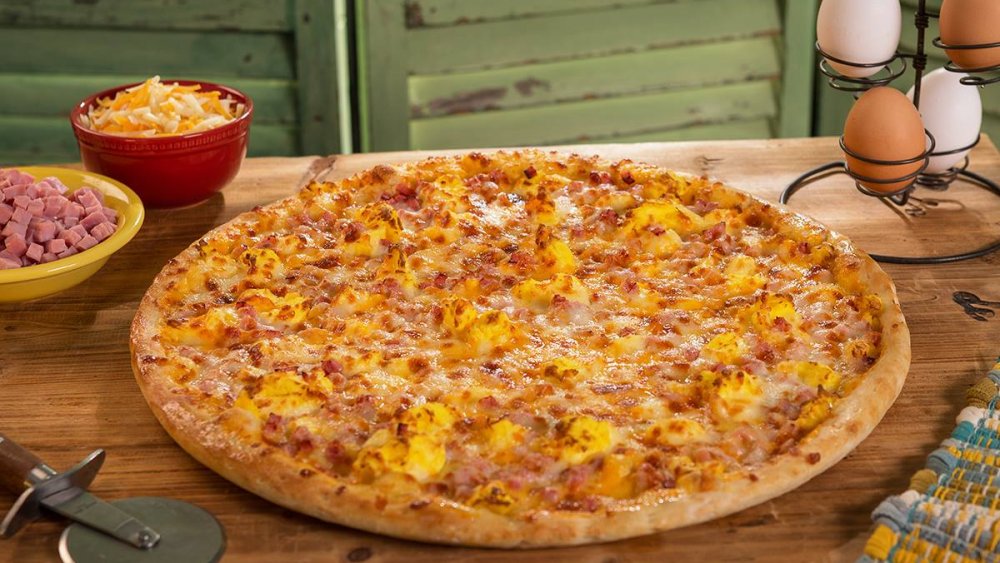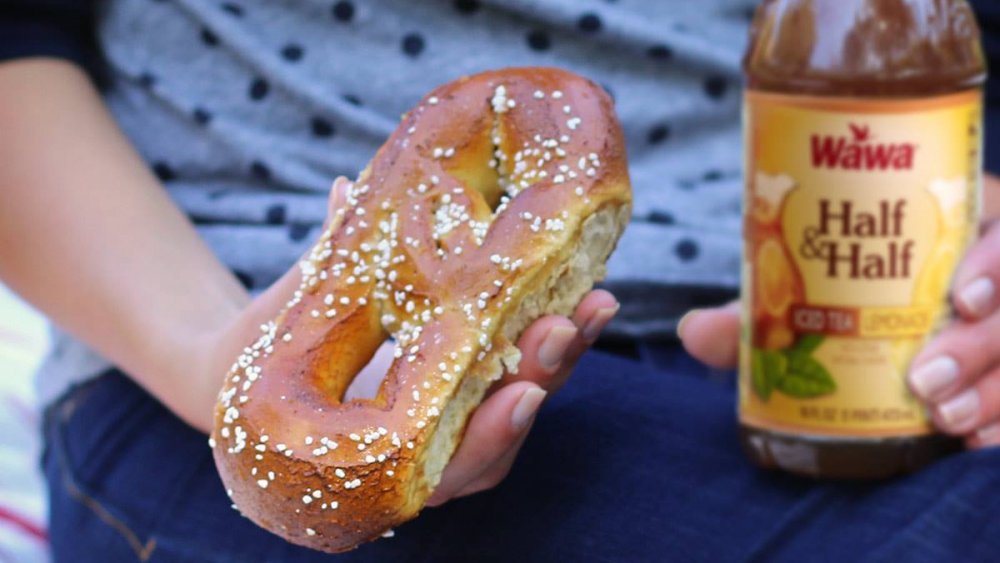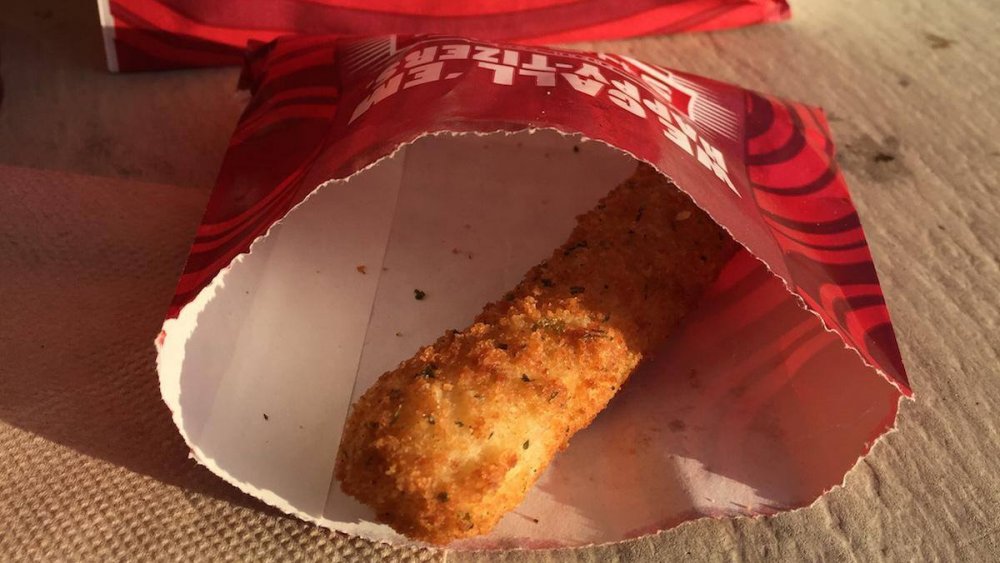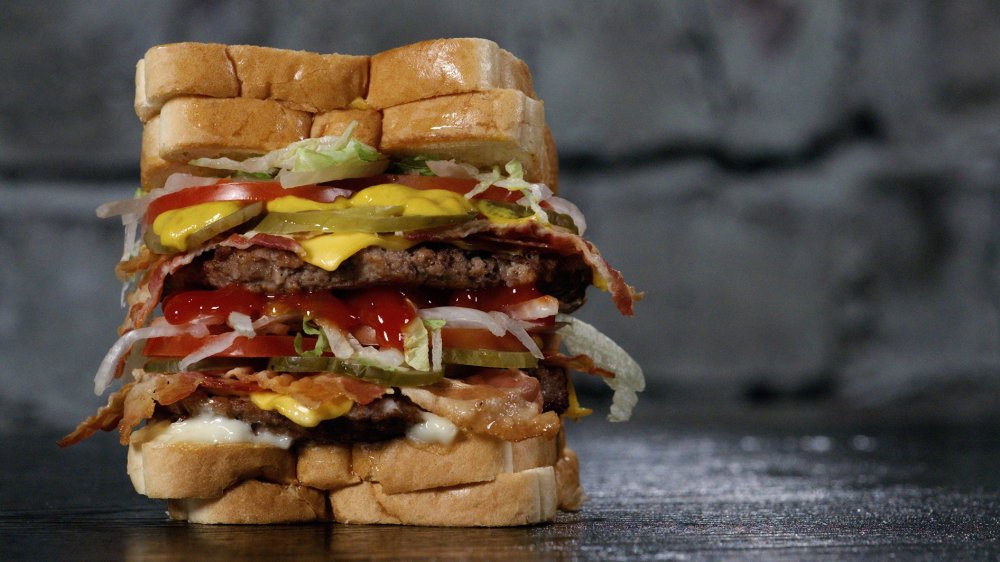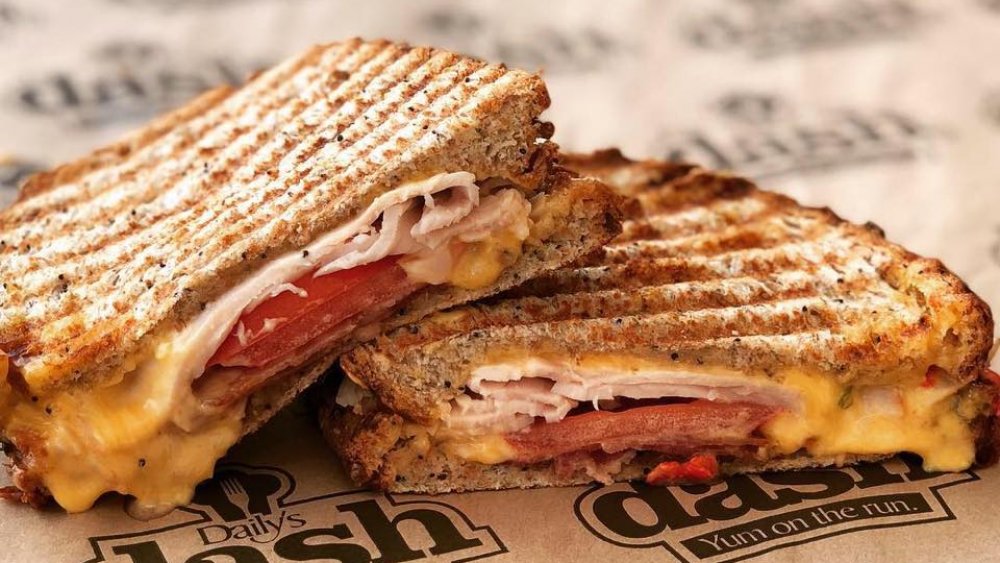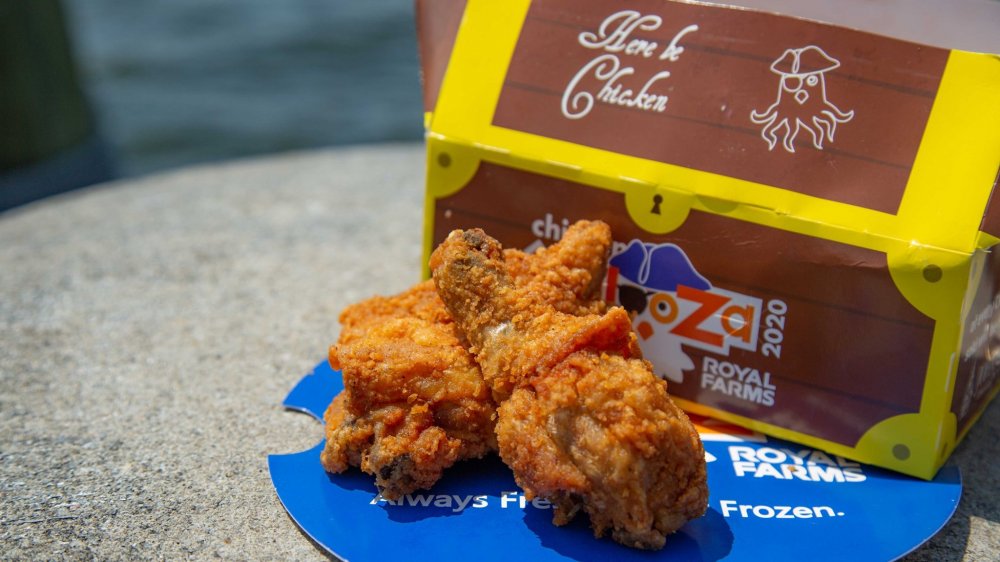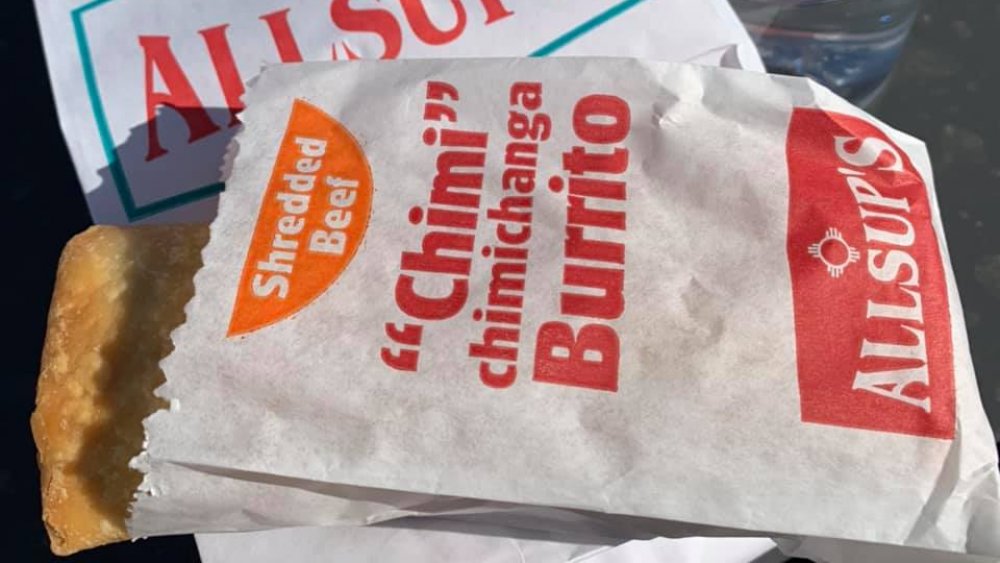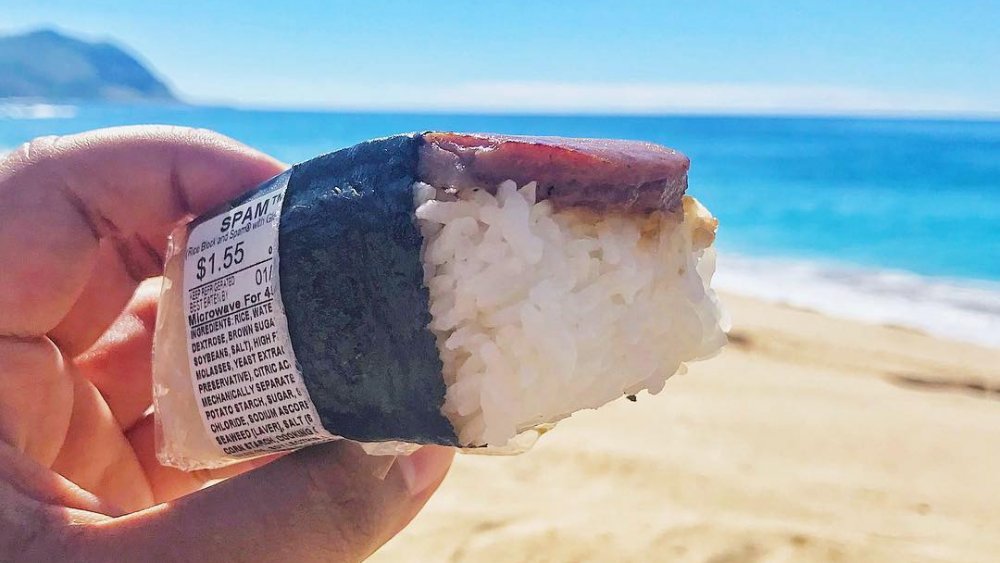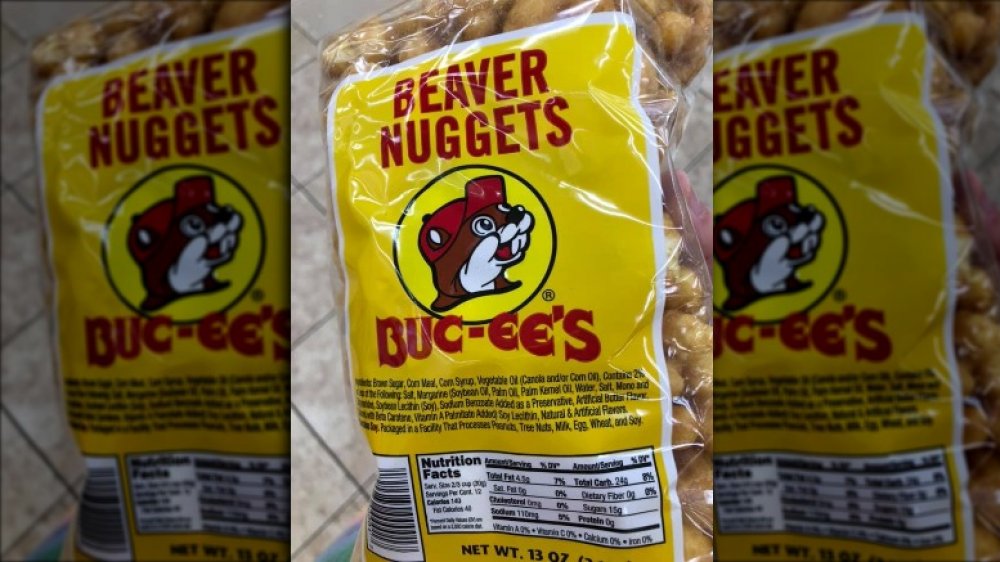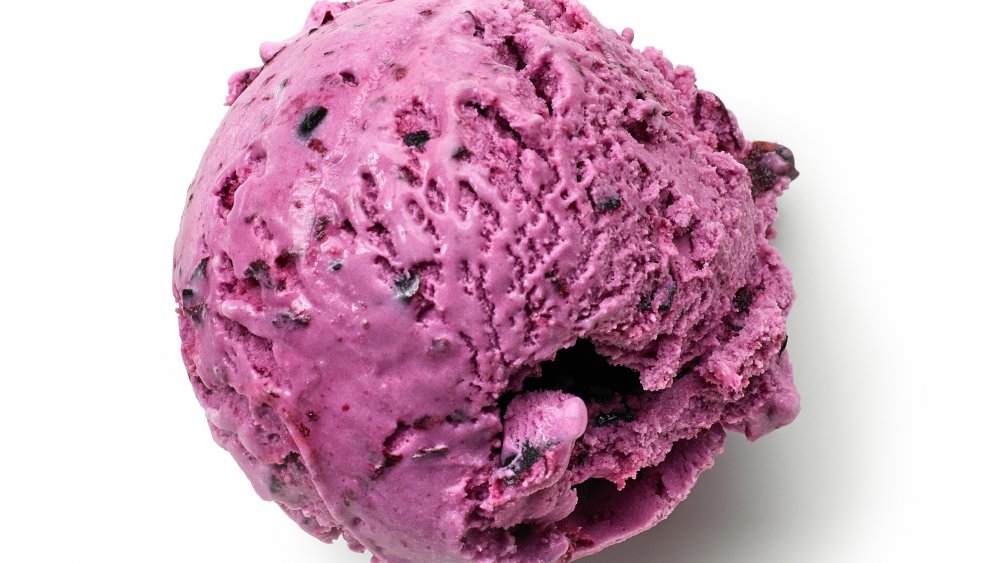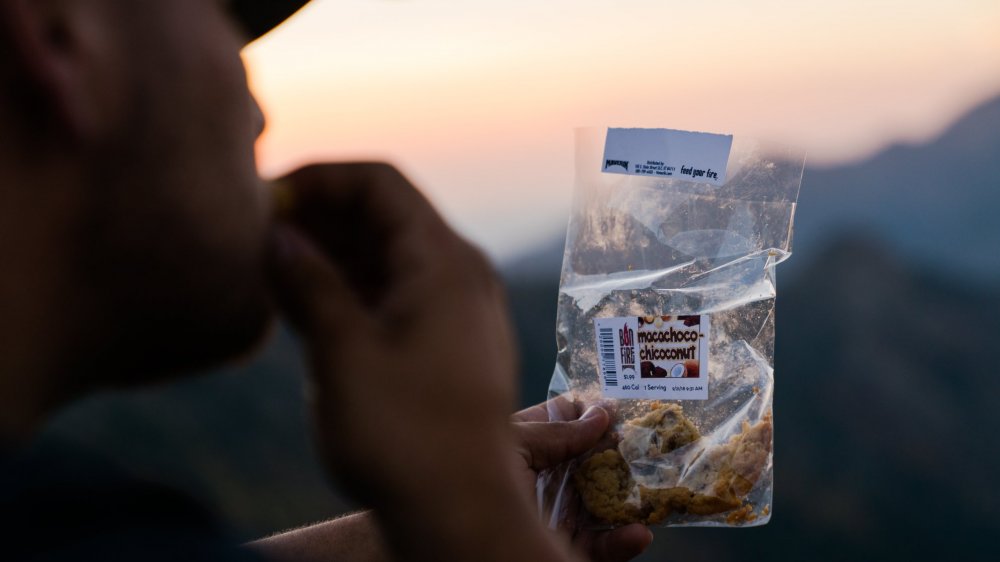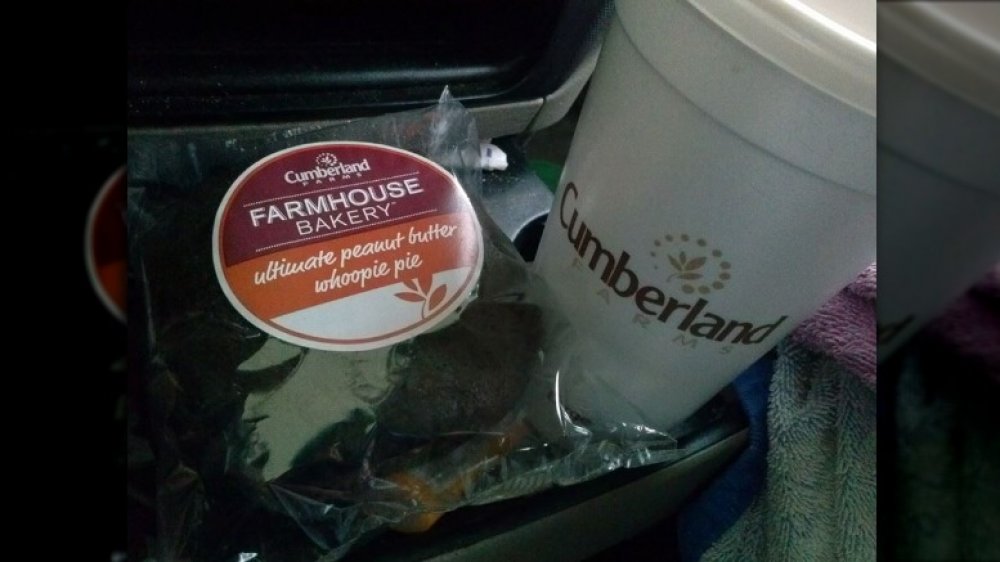Underrated Food You Can Only Buy At Gas Stations
There's a throwaway line from the 1983 cult road movie classic, National Lampoon's Vacation, in which a dad played by Chevy Chase is driving across America with his family: "I'm so hungry I could eat a sandwich from a gas station."
When heard today, the joke falls flat. After all, as CNN Business reports, these days, America's gas stations are doing increasingly big business by hawking organic salads, keto snacks, and kombucha. Even when they do stick to the calorie-laden classics such as pizzas, burgers, and burritos, more often than not, they're using all-natural, locally sourced, high-quality ingredients.
As the CNN report explains, large convenience store chains (about 80 percent of which come equipped with gas stations) are an increasingly popular solution for those in search of gas and food. Meanwhile, as lifestyles change, more and more people are favoring quick snacks over full-out meals. They find them in growing regional chains such as Wawa, Sheetz, Buc-ees, and Maverik, which have created customized brands and specialty foods. In doing so, they've also created intensely loyal foodie fan bases.
And still, there are those die-hards, like Chevy Chase's Vacation character, who believe that gas station food is synonymous with grease, fat, and calories. Of course, some of that greasy goodness is still alive and sizzling. But as we show below, there's a whole world of under-the-radar grub out there to fuel your next road trip.
Casey's General Store breakfast pizza
There's been lots of rejoicing in certain quarters ever since registered dietician Chelsey Amer told The Daily Meal that chomping into a piece of protein-packed pizza is a healthier way to start the day than your average bowl of cereal.
The scientific findings are no surprise to Iowans who, for years, have been stopping in for a ritual morning slice of Casey's breakfast pizza. Although the Des Moines-based gas station chain has an abundance of snack options, everyone comes for the pizza. As The Food Hussy explains, "It's what you do every weekend — you stop at Casey's before you go to the game, before you go hunting, before you go boating, before you do ANYTHING!" Actress (and wife of Iowan actor Ashton Kutcher) Mila Kunis famously concurs, citing Casey's breakfast pizza as her favorite gas station snack.
In its deconstruction of the famous pie, The Kitchn explains how it transcends breakfast pizza basics — sausage, eggs, and cheese on a dough crust — by scrambling the eggs and adding a velvety cheese sauce. While sausage can easily be swapped for bacon or veggies, if you opt for sausage gravy, you're at risk of missing out: The cheese is the way to go.
Wawa's soft pretzels
An essential go-to for generations of Philadelphians, Wawa is way more than a gas station convenience store franchise. According to Food and Wine, the once-modest suburban dairy store has morphed into one the most beloved quick-service food operations in America, inspiring what Food 52 describes as a "cultish devotion" among its faithful Pennsylvania customers.
Although it's garnered considerable renown for its made-to-order hoagies, the quintessential Wawa treat is the freshly-baked Philadelphia-style soft pretzel. Aside from their delicious doughiness, Philadelphia pretzels are unique in that they're kneaded into the shape of a tight figure eight. Described by Food and Wine as a "malt bomb" endowed with bagel-esque levels of chewiness, a single Wawa pretzel is both large enough, and salty enough, to sustain two hungry non-Pennsylvanians. (Viewed that Philadelphians supposedly consume 12 times more pretzels than the average American, most can probably wolf down an entire pretzel without missing a beat).
If Wawa pretzels have a drawback, it's that they tend to induce considerable thirst. Fortunately, Wawa has you covered. While it receives plenty of accolades for its drip coffee. And according to Food 52, the perfect pretzel pairing (and antidote to all that rock salt) is a half-gallon of Wawa iced tea.
Sheetz's fried cheez
There seems to be an unofficial consensus that Pennsylvania is the American state with the best gas station food. However, within this consensus is a chasmic split as to whose gas station grub is the best: Wawa's or Sheetz's (yes, the rivalry is so fierce that it inspired a movie). Since it was established in Altoona, Pennsylvania, in 1952, the Rust Belt institution has expanded geographically into six states. It's also expanded culinarily, constantly adding to its endlessly scroll-able menu of burgerz, fryz, and shwingz (i.e., wings).
Once you've sampled the chain's bellz and whistlez, you can get down to what Sheetz does best. Thrillist describes Sheetz as subscribing to a guiding philosophy of "full-blown, deep-fried hedonism," and there's nothing more hedonistic than deep-fried cheese.
At Sheetz, deep-fried cheese comes in various, highly recommended incarnations. Sheetz's mozzarella sticks are delicious, and their texture has a perfect balance of firm, stretchy cheese encased in a golden layer of crunch. Thrillist sings the mozzarella sticks' praises, citing the inspired addition to a reconfigured chicken parm sandwich known as The Big Mozz. (The Big Mozz also exists in a more prosaic but hardly less cheesy burger form).
You also have to try the chain's cheese bitez, in versions that range from cheddar and jalapeno to mac 'n cheese. Although it would seem impossible to improve upon the gooey-crunchy triangular-shaped nuggets, they're even better when generously doused in Sheetz's legendary Boom Boom sauce.
Rutters' Ultimate and Route 30 burgers
With Wawa and Sheetz locked in a constant state of culinary one-up-manship, there's plenty of opportunity for stealth favorites such as York-based Rutter's to leave its mark on Pennsylvania's gas station gourmet scene. Founded in 1747 as a family farm (still in operation to this day), Rutter's is accomplished at fusing local traditions with forward-thinking eating.
A very big case in point is Rutter's Ultimate Burger. The most craveable, award-winning version involves a 100 percent slab of Angus beef topped with BBQ beef short ribs. However, between beef and buns you can also insert crab cakes, a pastrami melt, mozzarella sticks, pork belly, french fries, funnel cake fries, jalapeno bites, mac & cheese bites, and/or fried pickles — and that's before squeezing and spreading on a choice of some 60 toppings and condiments.
If the Ultimate sounds a little daunting, consider the equally popular Route 30 Burger, named after the U.S.'s third-longest route, which passes by Rutter's original farm as well as many of its stores. The Route 30 Burger takes some unexpected detours, such as replacing traditional buns with a grilled cheese sandwich. It also allows customers to choose up to three burgers — with corresponding quantities of bacon, cheese, and all toppings — in the event they find themselves, as Rutter's website delicately puts it, "feeling a little extra hungry."
Daily's' Kickin' Pimento cheese sandwiches
When Daily's, a northern Florida chain, decided to invest in its gas stations' Daily Dash delis, the chain called on Culinary Institute of America grad Robert Fallon to create a menu that skewed gourmet while remaining affordable. Fallon came up with an eclectic assortment of offerings anchored by a selection of freshly prepared sandwiches made with all-natural and, if possible, local ingredients.
An entire section of Daily's Dash menu is devoted exclusively to grilled cheese, but amidst the smoked ham and Swiss and triple melts, one particular sandwich stands out. Praised by the likes of Food and Wine, the Kickin' Pimento BTT consists of sliced tomatoes and premium deli bacon and turkey piled between two thick layers of multi-grain bread that's been lavishly slathered with pimento cheese.
For clueless Northerners, pimento cheese (a.k.a. "paté of the South") at its most basic is a mixture of cheese (usually cheddar), mayo, and pimentos. Also known as a cherry pepper, this sweet, aromatic chile pepper is most universally recognized as the bright red stuffing found in green cocktail olives.
In the South, pimento cheese comes in guises as varied as dips for chips or topping for grits. Daily's BTT, however, relies on Palmetto cheese, the brand famously served at the Master's Tournament in Augusta, Georgia, lending an extra dollop of cachet to this gas station sandwich.
Royal Farms' World Famous chicken with a side of Western fries
The fact that Royal Farms sells its fried chicken under the name "World Famous" is obviously a case of advertising hyperbole. That said, it's no exaggeration that within the lucky five states in which the Baltimore-based chain operates, fried chicken junkies are willing to make a detour in order to sink their teeth into what Food and Wine has anointed "the best fast-food fried chicken à la gas station."
There are a whole lot of reasons for Royal Farms' fame. The most fundamental is that the chain relies on fresh, never frozen, chicken. The chicken is first pressure-cooked to seal in succulent juices, then the bird is then generously hand-breaded in a crunchy coating infused with special spices before being fried to addictive crispiness.
The World Famous chicken comes in various lunch and dinner quick meals as well as robust family multi-packs (including 50-piece packs for particularly famished, multi-generational clans). For those who are finicky about their poultry pieces, technology allows you to hone in on your favorites — wings, drumsticks, breasts — with the tap of a touchscreen.
Happily, World Famous chicken is accompanied by equally World Famous and delicious battered and fried potato wedges known as Western fries. And if you happen to hit up a Royal Farms during its annual Chicken Palooza festival, you can enjoy major discounts and vie for the chance to win the grand prize of World Famous chicken for a year!
Allsup's chimichanga
Ever since 1956 when they opened "Lonnie's Drive-in Grocery" in Rosewell, New Mexico, Lonnie and Barbara Allsup have been gas station pioneers. According to CSP, Allsup's was one of the first gas stations to offer 24-hour self service gasoline as well as home-cooked grub such as barbecue and burritos.
Over the decades, it's become an after-hours tradition in New Mexico to wind down the night at Allsup's in the company of a piping hot chimichanga. Defined by the Urban Dictionary as "a deep-fried burrito sent from God to please humanity," Allsup's chimichanga, known as "The Chimi," comes filled with chicken and hatch green chiles as well as shredded beef.
Considered a Tex-Mex culinary icon, the modern chimichanga was actually invented in Arizona. Although a couple of origin stories exist, the name itself — as well as the dish — is attributed to Monica Flin, who owned Tuscon's oldest Mexican restaurant, El Charro. In the early 1950s, Flin decided to whip up a midnight burrito snack while babysitting her nieces.
According to Flin's great-grand-niece, when one of the girls accidentally bumped into her, the burritos went flying into a vat of hot oil. In frustration, Monica let out a censored version of a well-known Spanish curse, which came out sounding like "chimichanga." Fortunately, the cursed culinary error turned out to be divine inspiration. At Allsup's, The Chimi is so exalted that a local devotee referred to it as "my Fried Ecstasy of New Mexican Goodness."
7-Eleven Hawaii's Spam musubi
From the outside, Hawaii's 7-Eleven gas stations look identical to those anywhere else in the world. However, step inside and begin to scan the shelves, and you'll discover a tantalizing array of quintessentially Hawaiian nosh-ables packaged for immediate consumption. Among the most coveted of these local comfort foods is Spam musubi.
According to Hawai'i Magazine, this favorite Island snack was actually invented by Japanese immigrants living on the U.S.'s West Coast who were herded into internment camps following the 1941 bombing of Oahu's Pearl Harbor. With Spam being cheap and easily available at the time, the creators made a riff on sushi, layering seasoned slices of Spam on top of molded white rice. Over time, the dish gained in popularity, and even soldiers stationed in Hawaii during WWII enjoyed it. In fact, today's Island residents can boast to being the biggest per capita consumers of Spam in the United States — most of it via musubi.
7-Eleven sells a modernized version of musubi in which the meat is marinated in a sweet shoyu sauce and bound to a block of pearly rice with a ribbon of nori (dried seaweed). For over a decade, it's been recognized as Hawaii's best Spam musubi. However, more alternative renditions are constantly emerging on store shelves, including teriyaki, Sriracha, katsu, spicy garlic shrimp, and deluxe Spam musubi (with egg and furikake). All of them pair perfectly with 7-Eleven's equally endemic Slurpee flavors such as lychee and lilikoi (passionfruit).
Buc-ees' Beaver Nuggets
While it's an exhausted cliché to talk about the over-the-top-ness of everything Texan, in the case of Buc-ees, the cliché is excessively apt. Aside from building the largest gas stations in the world, the Lone Star chain's New Braunfels location is considered the largest convenience store in the world.
Once you step inside any Buc-ees, it's ridiculously easy to feel overwhelmed by all the edible offerings on display. As befits a Texan gas station, pride of place is reserved for a full-out Texan barbecue joint. Yet no less daunting are the miles of shelves crammed with regional road snack exotica including pickled quails' eggs, cups of deconstructed key lime pie, mini loaves of jalapeno cheese bread, and true to yet another cliché, pecans in every iteration imaginable.
Maybe the sheer, sense-overloading excess explains why the most iconic Buc-ees snack of all time is a bag of beaver nuggets. Made from basically only ingredients — brown sugar and cornmeal — beaver nuggets taste like a cross between caramel corn and a Cheeto and are about about as down-to-earth as a snack can get, which no doubt accounts for their being horrifyingly addictive. Indeed, according to Food and Wine many road trippers who stop by Buc-ees just focus on the fundamentals: a trip to the award-winningly immaculate bathrooms and the purchase of at least one bag of beaver nuggets for the road.
Stewart Shop's Black Raspberry ice cream
Driving down any kind of highway on a sultry summer day is the best kind of excuse for an ice cream pit stop. Legions of gas stations across the land hawk every kind of ice cream imaginable, from the softest serve to the crunchiest Chipwich. However, only at family-owned Stewart's Shops in upstate New York and downstate Vermont can you fill your waffle cone up with a scoop of black raspberry ice cream.
Black raspberry may sound kind of banal when compared to the regional rivals on Stewart's menu. We're talking intriguing flavors with gallons of local pedigree such as Adirondack Bear Paw and Bake Placid Cheesecake, all made with milk sourced from local dairy farms.
However, Stewart's black raspberry more than makes up for its lack of lyricism with the sharpness and distinctiveness of its flavor. While it's a dead ringer for a blackberry, rubus occidentalis (as it's botanically known) is actually a special variety of the common red raspberry. In terms of taste, it's a perfect hybrid of sweetness and tartness that transports those who order a scoop (or a half-gallon) to that blissful state of eating berries right from the bush.
Maverik's BonFire cookies
When CSP published a special report about how consumers rate the "craveability" of convenience stores' in-house edible offerings, Utah-based Maverik scored a 81.4 percent rating for its sweet treats.
Drawing on its home state's natural environs, Maverik's vibe is outdoorsy. This ethos is reflected in the gas station's logo — "your Adventure's first stop" — as well as its convenience store's popular BonFire brand. In particular, customers express mountains of love for the chain's line of BonFire Cookies.
Classics such as Reese's peanut butter, lemon poppy, blueberry, and triple chocolate chip flavors have inspired countless copycat recipes across the Internet. More difficult to pronounce (and reproduce) are the S'morezilla (chocolate-covered graham crackers with a gooey caramelized marshmallow heart) and macachocochiconut (macadamia nuts, chocolate chips, and coconut). Channeling campfires and nut-centric trail mix, they've no doubt contributed to Maverik's multiple crowning as Prepared Foods Innovator of the Year in 2018.
Cumberland Farms' whoopie pies
When it comes to whoopie pies, there's a lot of controversy surrounding who invented this New England delicacy, and where. According to a culinary historian with the alliterative name of William Woys Weaver, neither Maine, which claims the whoopie pie as its state "treat", nor Pennsylvania, where Amish children have memories of yelling "Whoopie" upon discovering the homemade sweets in their school lunches, can make the claim.
An objective Pennsylvanian, Weaver posits that the first official whoopie cake was made by the Berwick Cake Company in Massachusetts, who reinvented it, possibly by riffing on a cake served at the train station in Berwick, Maine. The result was the delicious double whammy of two soft chocolate cakes stuck joined by creamy frosting. The name, however, was borrowed from a popular 1920's Broadway show, "Makin' Whoopee."
It's fitting that Massachusetts not only gave birth to the modern-day whoopie pie but also to Cumberland Farms. Before it started pumping gas, the Westborough-based, family-owned chain was New England's first convenience store. The parallel isn't lost on customers who ritually head to "Cumby's" for in-house whoopie pies and cookies chased with a cup of coffee. Sold under the Farmhouse brand, pie flavors range from peanut butter to chocolate chip, while cookies skew from chocolate chunk to red velvet. All are pretty whoop-worthy, especially considering they're coming from a gas station.
